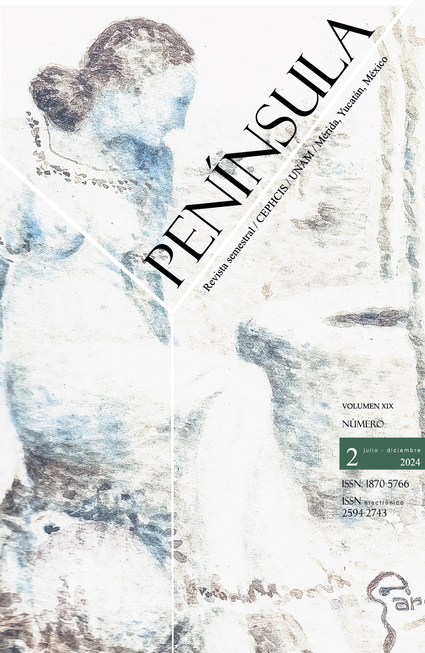Mary Stuart, the Cryptographer Queen
Main Article Content
Abstract
Mary Stuart is a controversial character of universal history. After six days of her birth, inherited the Crown from her father James V of Scotland. At the age of twenty-five, she was forced to abdicate the throne and fled to England to seek for refuge at the court of her cousin Elizabeth I, who, perceiving her as a threat, kept her prisoner for nineteen years, until 1586, when she was found guilty of involvement in a conspiracy against her. During her captivity, she had an intense letter exchange with many personalities from French, Spanish, and Scottish society, using several and very sophisticated message encryption systems for that epoch. This paper analyzes the encoded epistolary corpus and its relation to the events that led to her execution on February 8, 1587.
Downloads
Article Details
Citas en Dimensions Service
References
Bacon, Roger. 1859. “Opera quaedam hactenus inedita, vol. I: opus tertium, opus minus”. En Compendium philosophae, edición de J. Brewer. S. l.: Longman-Green & Roberts.
Clemens, Raymond. 2016. The Voynich Manuscript. Londres: Beinecke Rare Books-Manuscript Library.
Drosnin, Michael. 1997. The Bible Code. Nueva York: Touchstone.
Dures, Alan. 1983. English Catholicism, 1558-1642: Continuity and Change. Essex: Longman.
Ershova, Galina. 2013. Epigrafía maya. Introducción al método de Yuri Knorosov. Ciudad Guatemala: cemyk.
Fraser, Antonia. 2015. Mary Queen of Scots. Londres: Weidenfeld & Nicolson.
Gaines, Helen. 1956. Cryptanalysis. Nueva York: Dover.
Google. 2023. Book Ngram Viewer. Consultado el 5 de diciembre. https://books.google.com/ngrams.
Guy, John. 2004. “My Heart is my Own”: The Life of Mary Queen of Scots. Londres: Fourth Estate.
Hassabis, Demis. 2017. “Artificial Intelligence: Chess Match of the Century”. Nature, 544: 413-414.
Herodoto. 1942. The Persian Wars, traducción de G. Rawlinson. Londres: The Modern Library-Random House.
Julio César. 2006. Gallic Wars (a partir de los Bello Gallicum, 50 a. C.). S. l.: Dover, 23-24.
Kahn, David. 1996. The Codebreakers. Nueva York: Simon and Schuster.
Kirkpatrick, Donald et al. 1983. “Optimization by Simulated Annealing”. Science 220 (4598): 671-680.
Kindi al, Ibraham A. 1992. “The Origins of Cryptology: The Arab Contributions”. Cryptologia 16 (2): 97-126.
Lasry, George et al. 2023. “Deciphering Mary Stuart’s Lost Letters from 1578-1584”. Cryptologia 47 (2): 101-202. Consultado el 8 de febrero de 2024. https://doi.org/10.1080/01611194.2022.2160677
Ornes, Stephen. 2023. “Secret Messages Can Hide in AI-Generated Media”. Quanta Magazine. Consultado el 18 de mayo de 2023. https://www.quantamagazine.org/secret-messages-can-hide-in-ai-generated-media-20230518.
Poe, Edgar Allan. 2008. Cuentos completos. Madrid: Páginas de Espuma.
Pollen, John Hungerford. 1922. Mary Queen of Scots and the Babington Plot. Edimburgo: Edinburgh University Press.
Suetonio. 2000. Lives of the Caesars. Traducción de Catharine Edwards. Oxford: Oxford University Press.
Silver, David et al. 2017. “Mastering the Game of Go without Human Knowledge”. Nature 550: 354-359.
Schroeder de Witt, Christian et al. 2023. “Perfectly Secure Steganography Using Minimum Entropy Coupling”. Consultado el 18 de mayo de 2023. https://arxiv.org/pdf/2210.14889.pdf.
Singh, Simon. 1999. The Code Book. Nueva York: Anchor Books.
Smith, Laurence Dwight. 1943. Cryptography, the science of secret writing. Nueva York: Dover.
Súlí, Muhammad ibn Yahyá. 1922. Adab al-Kuttáb. S. l.: Al-Daira al-Matbáah al-Salfiyah.
Taylor & Francis Online. 2023. Consultado el 1 de diciembre de 2023. https://www.tandfonline.com.
Vigenère, Blais de. [1586] 2006. Traicte des chiffres, ou secretes manieres d’escrire. París: Hachette bnf.
Weir, Alison. 2008. Mary, Queen of Scots and the Murder of Lord Darnley. Londres: Random House.
